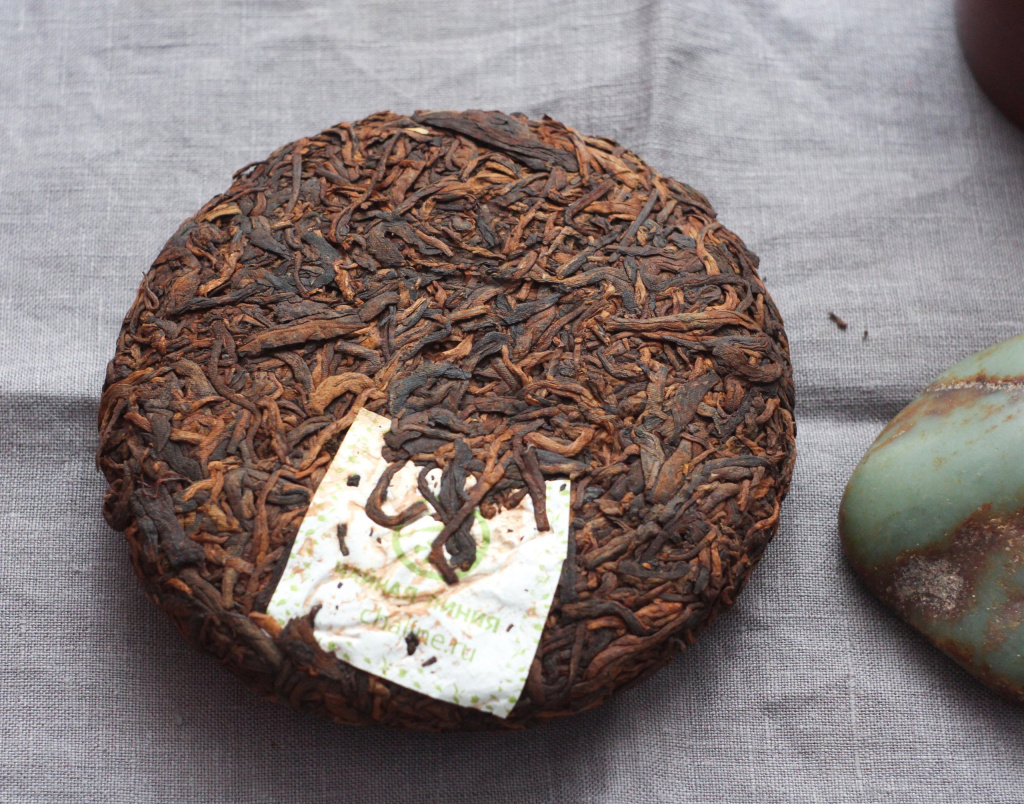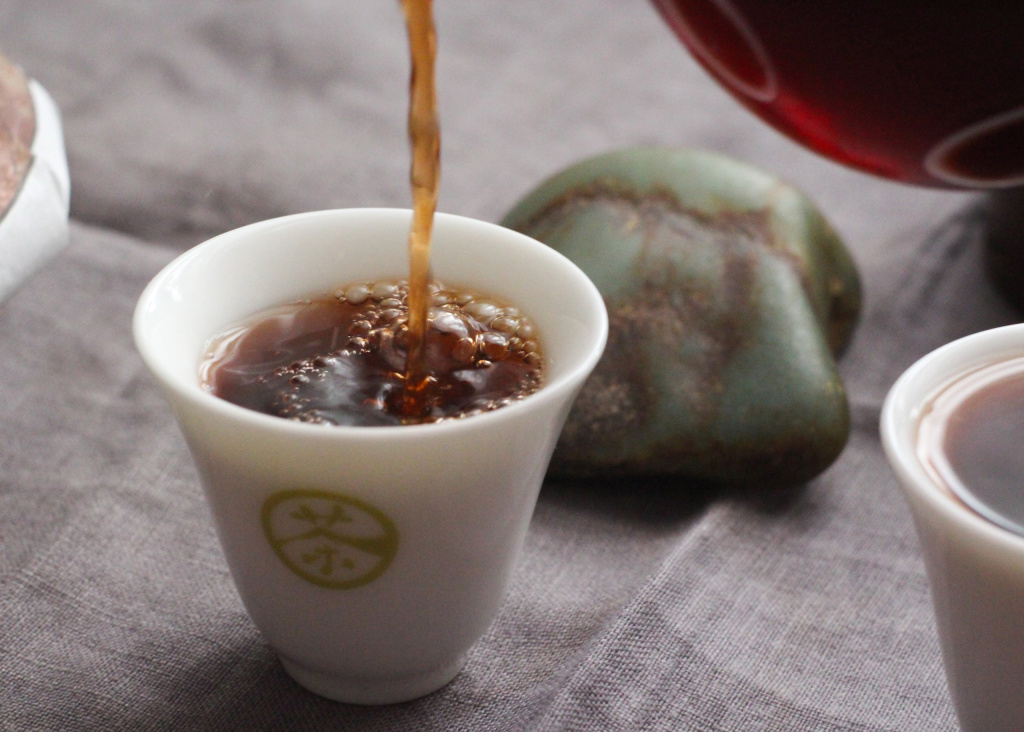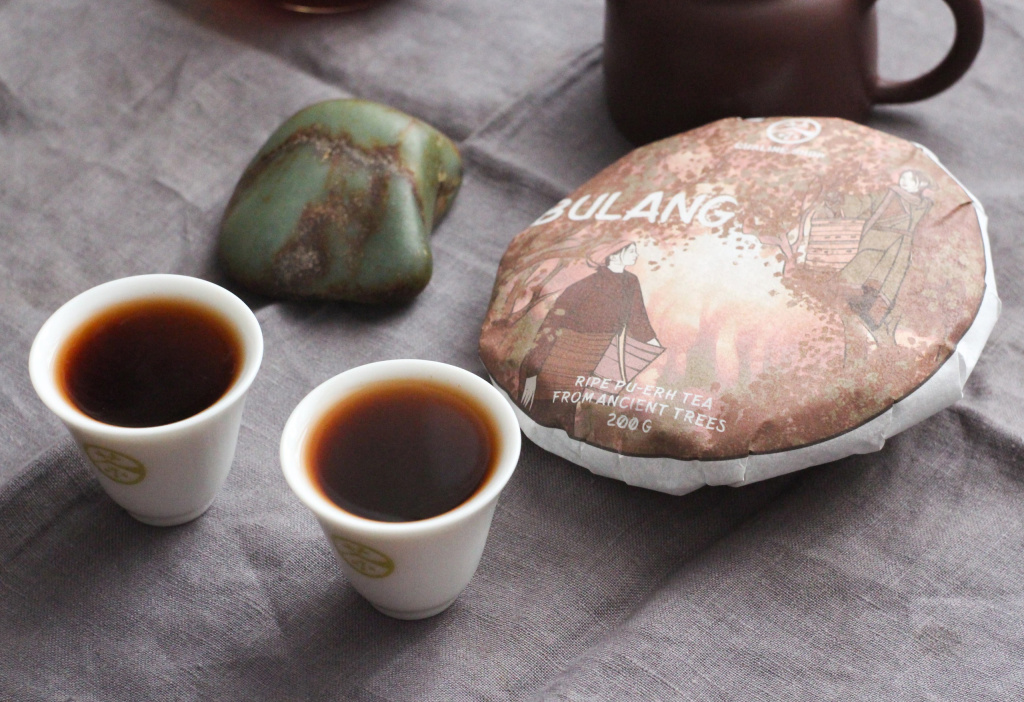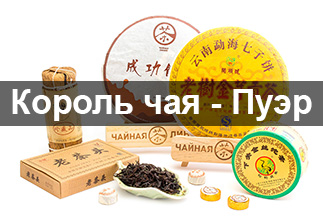The production uses raw materials collected from old trees aged 100 to 300 years in Bulangshan (布朗山, bùlǎng shān) - a unique region known for its rich tea heritage and the culture of the Bulang people. Its mountainous terrain and diverse natural conditions create ideal conditions for growing tea. Some of the oldest tea trees are found here, producing high-quality pu-erh.
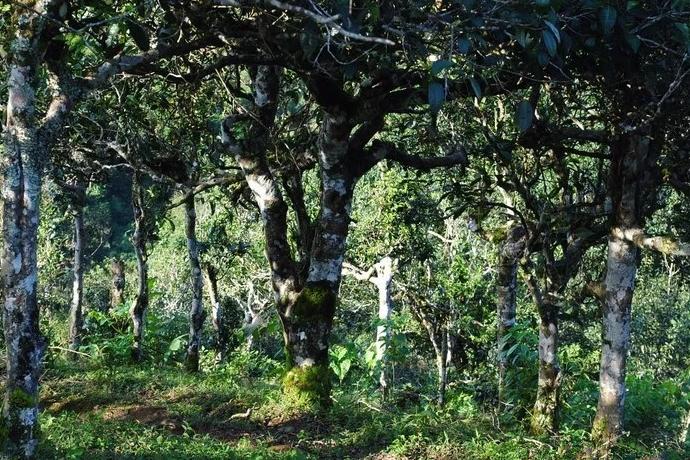
The tea trees in this area are distinguished by their characteristics: straight-trunked and small trees have unique leaf shapes and sizes, which affect the taste and aroma of the finished product. The high forest content and soil diversity contribute to a rich ecosystem balance, which also influences the quality of the tea.
We entrusted the fermentation of this exclusive raw material to master Zhang Dechun (Chinese: 张德春, pinyin: zhāng déchūn), who has 19 years of experience in fermenting shu puer. Mr. Zhang Dechun also owns a small factory for fermenting Chunla Xiyan tea (Chinese: 春腊习验 pinyin: chūnlà xíyàn).
This is the factory where the fermented raw material for our signature shu puer was collected. Fermentation was carried out in small-volume baskets (also known as fermentation with separation from the ground).
Shu Pu'er from the large forests of the Bulang Mountains has a rich, deep nutty-woody aroma with notes of coffee, slightly sweet and salty, with hints of creaminess, a taste with earthy notes, woody (木香, mù xiāng, "musiang"), oily in the body, with sweetness and bitter chocolate in the aftertaste.
An excellent specimen for a collection, the tea has a huge potential for storage and transformation over time.
|
English name
|
Ripe puerh tea 2024 from the ancient trees of the Bulan, 200 g |
|
Country
|
China |
|
Habitat
|
Булан (布朗, Bùlǎng) |
|
Manufacturer
|
Чайная Линия |
|
Declared weight, g
|
200 |
|
Fermentation method
|
С отрывом от земли |
|
Type of tea raw material
|
Large trees (100-300 years) |
- Комментарии
- Вконтакте
Pu-erh is one of the most unique types of tea, which only gets better with age. Many people, when they first encounter this tea, wondered: why is pu-erh more often found in pressed form (cakes, bricks, tochas), and not in loose form? The reasons for this are related to both history and the practical aspects of storing and fermenting tea. Despite modern technologies that allow the production of loose pu-erh, the shape of pressed cakes remains unchanged. And pu-erh is more often found on sale in pressed form, for example, in the form of cakes or bricks, and loose pu-erh is less common. We will talk about the reasons for pressing pu-erh into cakes in this article.
Puer is a unique Chinese tea that is distinguished by its depth of taste, complexity of aromas and versatility of aftertaste. Its taste characteristics are formed under the influence of many factors, from growing conditions to the brewing method. Let's look at the main ones.
Over time, some consumers who are part of the country's "tea elite" discover mainland Chinese tea. And only a few get acquainted with Taiwanese varieties. The path of a tea person is usually long and thorny, but ultimately it leads to the King of Teas - puer. But not everyone is able to go all the way from ordinary teas to puer and appreciate its qualities.
The tea ceremony occupies a special place in the centuries-old Eastern tradition. And although the essence of this phenomenon remains constant, the nature and external manifestations of the tea ceremony in different nations have their own national characteristics. In each Chinese province, the tea ceremony and the tea used in it are varied: for example, residents of the southern provinces prefer green tea, and residents of the northern provinces - red tea, in Fujian province they more often use Oolong tea, and in Yunnan province Puer tea is widely known.










